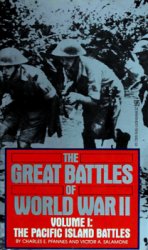Most of the delights recommended for the Great Khan's table seem to be a mixture of different gastronomic strains, perhaps deliberately so. The
Mongols enjoyed their emerging image of sophistication and worldliness and the reputation of their kitchens for exotic dishes from around the globe. A turtle soup was given a Mongolian flavor by the addition of mutton on the bone. The instructions indicate boiling the chopped mutton and bone together with five cardamoms into a broth. Five or six turtles should then be cooked, and when done they should be skinned, boned, and cut into lumps before adding to the soup. Fine vermicelli should be made and then roasted with the juice of a sprouting ginger and black pepper. This should then be added to the soup and the final taste adjusted with onions, salt, and vinegar.
Some delights found in ITu's collection can be discovered in a Middle Eastern pastry shop today. Poppy seed buns seem indistinguishable from the buns served in any modern Turkish, Arab, or Iranian bakery, with cow's milk used specifically and the poppy seeds sprinkled on the outside.
The steppe was not completely forgotten, and the presence of roast wolf soup attests to the influence of some nomadic diehards at the Qa'an's table. However, it is interesting to note that the wolf is flavored with some distinctly Persian, non-Mongol spices, namely saffron, asafetida (kasni), turmeric, and others.
In complete contrast to the wolf soup, sheep's head dressed in flowers was also offered. This interesting gastronomic novelty combined "all that was most creative in Sino-Mongol-Turkic cuisine," in the view of Paul Buell, editor of Hu Szu-hui's cookbook, who bravely tried as many of these dishes as he was able to cook. The three sheep's heads were cut up and cooked with four sheep's loins, a sef of sheep's stomach, and lungs. They were then deboned, dyed with safflower, and mixed with sprouting ginger, pickled ginger, five eggs, and fhree Chinese radishes cut into flower shapes. Flavor was adjusfed to taste with onions, salt, and vinegar.
Wild animals remained a favorite with the Mongols. Every possible animal and every possible animal part, internal and external, seems to have found its way to the table. Elephant meat is apparently insipid to taste, and overindulgence can make the eater feel heavy in the body. Camel is recommended more for its fermented, slightly sweetish milk than for its meat found in the humps, and wild camel is preferable. On a diet of bear's paw, wind and cold can be effectively resisted. Donkey meat controls "wind mania and chronic depression." Wild donkey, the kulan, can control "dizziness due to an evil wind." Deer was an obvious favorite and was believed to cure a number of ailments. The medullas, head, hooves, penis, horn, fat, flesh, velvet (furry covering of the antlers), and viscera of deer all found some role in the Mongols' kitchen. Deer features prominently in modern Chinese medicinal cooking, and deer genitalia are considered to have restorative value for the human sexual function. Like deer, every part and organ of the sheep ended up in the Mongol hot pot. Wild sheep were common on the steppes in the thirteenth and fourteenth centuries, and they were popular as a source of nutrition. Head, heart, liver, blood.
The five viscera, kidneys, bone, medullas, brain, and milk were all used in the dishes of the time.
Monkeys, weasels, badgers, wildcats, tigers, leopards, otters, dogs, wild boars, Yangtze porpoises, foxes, and even rhinos all fell to the chef's cleaver and were included as the main ingredients of specific dishes. As well as being recommended as plain food, these more exotic dishes became components in tonics, liquors, and balms. Some were suggested for physical application, including wolf fhroat's skin, which when wound around the head alleviated headache. A wolf's tooth warded off evil if worn, and a wolf's tail, hung before the breast of a horse, warded off evil influences and made the horse impervious to fear.
Fowl and poultry were traditional Mongol fare, particularly those hunted on the vast inland lakes high in the mountain stillness of Eurasia. Many varieties of swans were found in Mongolia but were unknown in China, therefore their presence in Hu's cookbook attests to the strong Mongolian traditions undaunted by the sophisticated cuisines dominant in their newly acquired lands. Swans, geese, cranes, curlew, wild hen, wild roosters, pheasants, many varieties of duck, pigeon, doves, quails, sparrows, and bunting were all eaten. Even the great bustard, described as sweet but coarse, ended up on the kitchen table. For cough and "hectic fever" the collard crow, despite its sour and salty flavor, was recommended.
As well as fowl, the freshwater lakes of the high mountains and the rolling steppe lands yielded abundant fish, and the Mongols added innumerable varieties of fish to their menus. Carp has been the favorite fish of the Chinese for centuries, and the Mongols gladly added this domesticated fish to their dishes. The Mongols were quick to take advantage of the fish culture of the Chinese, who had been domesticating and cultivating fish for thousands of years. Carp was introduced to the world by the Chinese. Bream, puffer fish, mud eels, sawfish, sheatfish, sturgeon, crab, shrimps, turtles, and mussels are just a few of the varieties of seafood and fish that could be found in the dishes served at Yiian courts.
The Yuan court is mentioned in particular because Qubilai and his successors came to epitomize the opulence and lavishness of the medieval world. There is evidence that other parts of the Mongol Empire hosted banquets, though not as sophisticated and bountiful as those witnessed in China, that were also demonstrative of an advanced gastronomic culture.
In the northern lands of the mountains and steppe a leg of raw lamb washed down with koumiss was no longer sufficient to serve the khan. A meal would occupy many courses.' Appetizers might have included momo shapale with sipeu mnniur sauce, delicate steamed Tibetan mushroom ravioli smothered in a creamy, spicy yogurt sauce. A salad of Bhutanese chili and cheese might have followed. The main course, shabril with dresil, comprised Tibetan meatball curry with nutted saffron rice, honey, and currants. Himalayan steamed bread with turmeric and barley beer with honey would have accompanied the main food, and also as a dessert
Chinese chestnut mound with cream and glazed fruit would have found favor. Momo is a traditional Tibetan dish using yak's meat, and mushrooms are a perfect complement and filler. In the Il-Khanate a more usual starter might have been hummus. The recipe for thirteenth-century hummus is basically the same as that found in Syria or Lebanon today. Fresh lemon juice, garlic, chickpeas, tahini, olive oil, paprika, and a touch of salt. The Koreans would have favored some hotter appetizer, and traditional biilgogi would have been popular. A steak was cut into cubes before frying in a very hot, spicy paste. After marinating, it was slowly and thoroughly grilled and served with chopped onions.
The fame that the opulence and abundance of Qubilai Khan's courf enjoyed in Europe and that inspired such English poets as Samuel Taylor Coleridge was engendered to a great degree by the words of Marco Polo. He devotes much of his narrative to evoking the lavishness of the Great Khan's tables and praising the hospitality and generosity he spread before his guests and visiting envoys. Marco Polo also had an eye for detail and for the historian he has provided a wealth of fascinating minutiae in his descriptions of daily life in the Mongol palaces.
THE FASHION OF THE GREAT KAAN'S TABLE AT HIS HIGH FEASTS
And when the Great Kaan sits at table on any great court occasion, it is in this fashion. His table is elevated a good deal above the others, and he sits at the north end of the hall, looking towards the south, with his chief wife beside him on the left. On his right sit his sons and his nephews, and other kinsmen of the Blood Imperial, but lower, so that their heads are on a level with the Emperor's feet. And then the other Barons sit at other tables lower still. So also with the women; for all the wives of the Lord's sons, and of his nephews and other kinsmen, sit at the lower table to his right; and below them again the ladies of the other Barons and Knights, each in the place assigned by the Lord's orders. The tables are so disposed that the Emperor can see the whole of them from end to end, many as they are. [Further, you are not to suppose that everybody sits at table; on the contrary, the greater part of the soldiers and their officers sit at their meal in the hall on the carpets.] Outside the hall will be found more than 40,000 people; for there is a great concourse of folk bringing presents to the Lord, or come from foreign countries with curiosities.
In a certain part of the hall near where the Great Kaan holds his table, there [is set a large and very beautiful piece of workmanship in the form of a square coffer, or buffet, about three paces each way, exquisitely wrought with figures of animals, finely carved and gilt. The middle is hollow, and in it] stands a great vessel of pure gold, holding as much as an ordinary butt; and at each corner of the great vessel is one of smaller size [of the capacity of a firkin], and from the former the wine or beverage flavoured with fine and costly spices is drawn off into the latter. [And on the buffet aforesaid are set all the Lord's drinking vessels, among which are certain pitchers of the finest gold,] which are called verniqiies, and are big enough to hold drink for eight or ten persons. And one of these is put between every two persons, besides a couple of golden cups with handles, so that every man helps himself from the pitcher that stands between him and his neighbour. And the ladies are supplied in the same way. The value of these pitchers and cups is something immense; in fact, the Great Kaan has such a quantity of this kind of plate, and of gold and silver in other shapes, as no one ever before saw or heard tell of, or could believe.
There are certain Barons specially deputed to see that foreigners, who do not know the customs of the Court, are provided with places suited to their rank; and these Barons are continually moving to and fro in the hall, looking to the wants of the guests at table, and causing the servants to supply them promptly with wine, milk, meat, or whatever they lack. At every door of the hall (or, indeed, wherever the Emperor may be) there stand a couple of big men like giants, one on each side, armed with staves. Their business is to see that no one steps upon the threshold in entering, and if this does happen, they strip the offender of his clothes, and he must pay a forfeit to have them back again; or in lieu of taking his clothes, they give him a certain number of blows. If they are foreigners ignorant of the order, then there are Barons appointed to introduce them, and explain it to them. They think, in fact, that it brings bad luck if any one touches the threshold. Howbeit, they are not expected to stick at this in going forth again, for at that time some are like to be the worse for liquor, and incapable of looking to their steps.
And you must know that those who wait upon the Great Kaan with his dishes and his drink are some of the great Barons. They have the mouth and nose muffled with fine napkins of silk and gold, so that no breath nor odour from their persons should taint the dish or the goblet presented to the Lord. And when the Emperor is going to drink, all the musical instruments, of which he has vast store of every kind, begin to play. And when he takes the cup all the Barons and the rest of the company drop on their knees and make the deepest obeisance before him, and then the Emperor doth drink. But each time that he does so the whole ceremony is repeated.
I will say nought about the dishes, as you may easily conceive that there is a great plenty of every possible kind. But you should know that in every case where a Baron or Knight dines at those tables, their wives also dine there with the other ladies. And when all have dined and the tables have been removed, then come in a great number of players and jugglers, adepts at all sorts of wonderful feats, and perform before the Emperor and the rest of the company, creating great diversion and mirth, so that everybody is full of laughter and enjoyment. And when the performance is over, the company breaks up and every one goes to his quarters.®




 World History
World History









